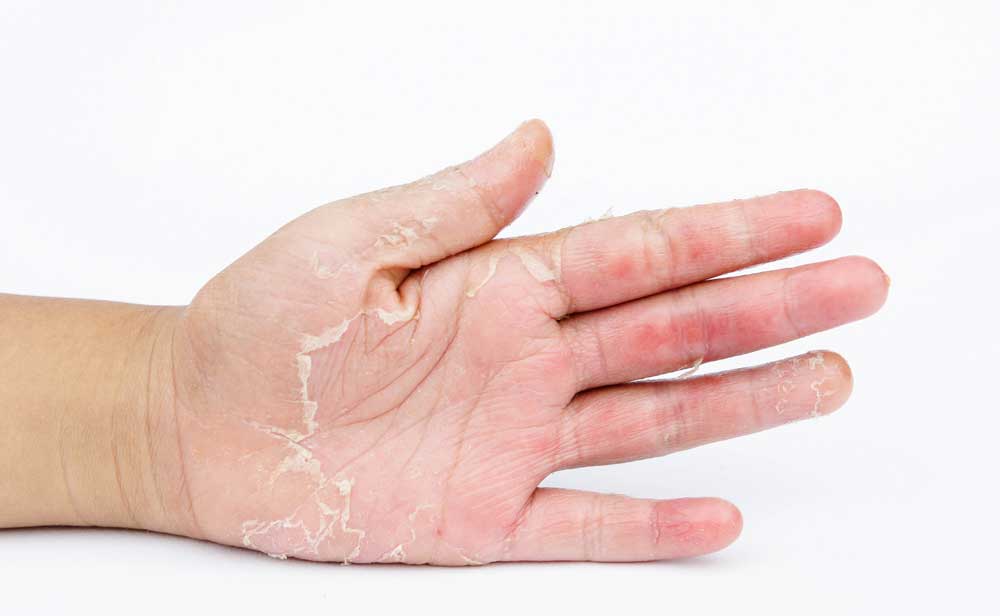Skin is the body’s largest organ. It has many different functions, including covering and protecting your body. It helps keep germs out. But sometimes the germs can cause a skin infection. It often happens when the germs enter your body through a break, cut, or wound on your skin. Other skin infections can happen in places where the skin rubs together, especially if the area is moist. Infections can also happen when you have a poor blood supply to an area of your body or if your immune system is weakened because of another disease or a medical treatment.
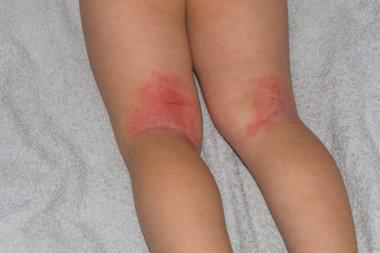
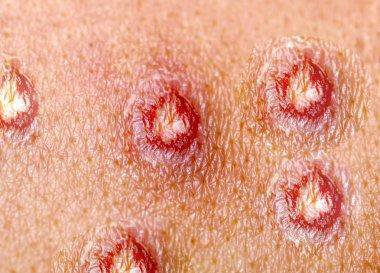
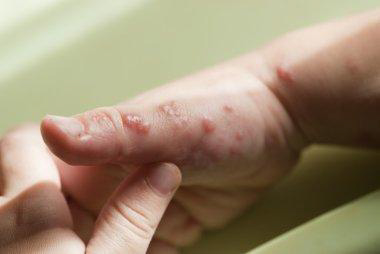
Some skin infections cover a small area on the top of your skin. Other infections can go deep into your skin or spread to a larger area.
Skin infections are caused by different kinds of germs, such as:
- Bacteria cause cellulitis, impetigo, and staphylococcal (staph) infections
- Viruses cause shingles, warts, and herpes simplex
- Fungi cause athlete’s foot and yeast infections
- Parasites cause body lice, head lice, and scabies
Skin infection is more likely to occur in some circumstances:
- Exposure to a particularly virulent organism
- A break in the integrity of the skin
- A contaminated wound, eg a human or animal bite, soil
- Underlying superficial skin disease, especially eczema/dermatitis and blistering conditions
- Extremes of age
- Becoming immunocompromised due to an underlying disease or condition eg diabetes, blood disorder, primary immunodeficiency, human immunodeficiency infection
- Treatment with immunosuppressive medication, particularly systemic corticosteroids, azathioprine, ciclosporin, mycophenolate, cyclophosphamide, or biologics.
The symptoms of a skin infection will depend on:
- the type of infection
- the cause
- Individual factors, such as whether the person has a weakened immune system
Common symptoms of skin infections include:
- redness on pales skin, or purple or darker areas of skin if you have a darker skin tone
- lesions that may be flat or raised, bumpy, wart-like, and so on
- itching
- pain and tenderness
- In some cases, a person may also have other symptoms, such as a fever.
Signs of a severe infection include:
Pus, blisters, skin sloughing, breakdown, dark areas that can indicate necrosis or tissue death, pain and discoloration, widespread swelling.
Types of skin infections:
1. Bacterial skin infections
Bacterial skin infections occur when bacteria enter the skin, either from an outside source or because they are present on the skin. They can enter the skin through a hair follicle or after a wound.
Anthrax is one type of bacterium that can enter from the environment. Staphylococcus and Streptococcus are bacteria that are commonly present on the skin and only cause a problem in certain circumstances. Lyme disease is a tick-borne infection that causes skin symptoms.
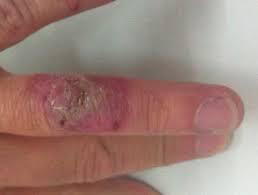
Anthrax infection
Bacterial infections can be systemic or local. Systemic infections can cause symptoms throughout the whole body, such as a fever, while local infections only affect a specific area. Some bacterial infections can begin in one area and spread throughout the body.
Some bacterial skin infections, such as impetigo, can spread between people through direct skin contact or with bodily fluids, contaminated food or water, or by touching surfaces where bacteria are present. Others, such as cellulitis, are not contagious.
Different types of bacterial skin infections include:
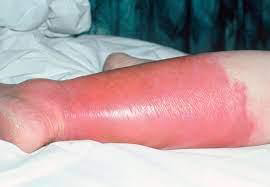
Cellulitis:
Cellulitis is a common bacterial skin infection that causes redness, swelling, and pain in the infected area of the skin. These can include extensive tissue damage and tissue death (gangrene). The infection can also spread to the blood, bones, lymph system, heart, or nervous system. These infections can lead to amputation, shock, or even death.
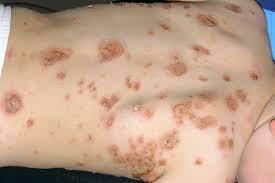
Impetigo:
Impetigo is a common and highly contagious skin infection that mainly affects infants and young children. It usually appears as reddish sores on the face, especially around the nose and mouth and on the hands and feet.
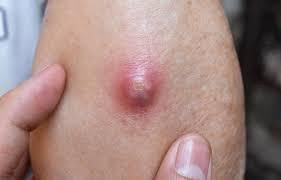
Boils:
A boil is a painful, pus-filled bump that forms under your skin when bacteria infect and inflame one or more of your hair follicles. A carbuncle is a cluster of boils that form a connected area of infection under the skin. Boils (furuncles) usually start as reddish or purplish, tender bumps.
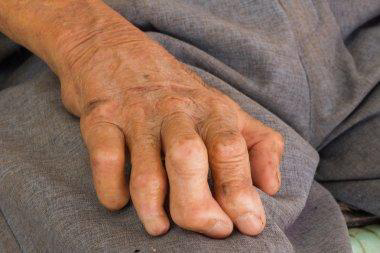
Hansen’s disease (leprosy):
Leprosy, also known as Hansen’s disease (HD), is a long-term infection by the bacteria Mycobacterium leprae or Mycobacterium lepromatosis. Infection can lead to damage of the nerves, respiratory tract, skin, and eyes. This nerve damage may result in a lack of ability to feel pain, which can lead to the loss of parts of a person’s extremities from repeated injuries or infection through unnoticed wounds. An infected person may also experience muscle weakness and poor eyesight. Leprosy symptoms may begin within one year, but, for some people, symptoms may take 20 years or more to occur.
Systemic infections that can cause skin rashes include:
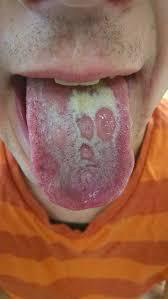
Syphilis:
Syphilis is an infection caused by bacteria. Most often, it spreads through sexual contact. The disease starts as a sore that’s often painless and typically appears on the genitals, rectum or mouth. Syphilis spreads from person to person through direct contact with these sores.
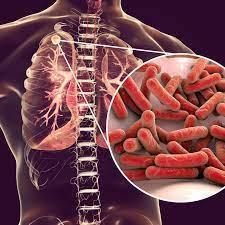
Tuberculosis:
Tuberculosis (TB) is caused by a bacterium called Mycobacterium tuberculosis. The bacteria usually attack the lungs, but TB bacteria can attack any part of the body such as the kidney, spine, and brain. Not everyone infected with TB bacteria becomes sick.
Leptospirosis: Leptospirosis is a zoonotic disease with epidemic potential, especially after a heavy rainfall, caused by a bacterium called Leptospira. Leptospira interrogans is pathogenic to humans and animals, with more than 200 serologic variants or serovars.
Some bacterial infections are mild and easy to treat with topical antibiotics, but other infections require an oral antibiotic or other medical treatment.
Treatment:
Minor bacterial infections often resolve without treatment. Due to increasing antibiotic resistance, first-line use of topical antibiotics, such as fusidic acid, is generally discouraged; topical antiseptics are often used as an alternative for minor infections. More serious or persistent bacterial infections are treated with oral, intravenous, or sometimes intramuscular antibiotics.
2. Viral skin infections
Viruses can cause different types of infections that have skin symptoms, such as:
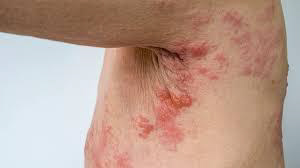
Shingles (herpes zoster):
Shingles is a painful, usually itchy, rash that develops on one side of the face or body. The rash consists of blisters that typically scab over in 7 to 10 days and fully clear up within 2 to 4 weeks. A person cannot get shingles from a person that has shingles. However, the virus that causes chickenpox and shingles can be spread from a person with active shingles to a person who has never had chickenpox or the chickenpox vaccine. The person exposed to the virus would develop chickenpox, not shingles.
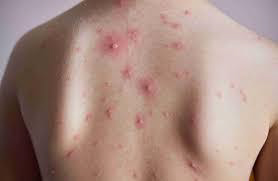
Chickenpox :
Chickenpox is a highly contagious disease caused by the varicella-zoster virus (VZV). It can cause an itchy, blister-like rash. The rash appears first on the chest, back, and face, and then spreads over the entire body. In most cases, you can only get chickenpox once. This is called life-long immunity. But in rare cases, a person might get it again, especially if they were very young when they had it the first time.
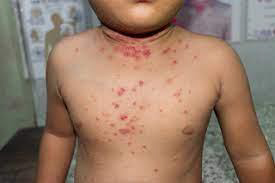
Molluscum contagiosum:
Molluscum contagiosum is an infection caused by a poxvirus (molluscum contagiosum virus). The result of the infection is usually a benign, mild skin disease characterized by lesions (growths) that may appear anywhere on the body. This is a common infection in children and occurs when a child comes into direct contact with a skin lesion or an object that has the virus on it.
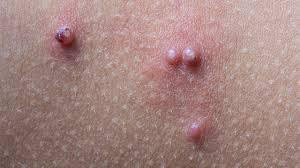
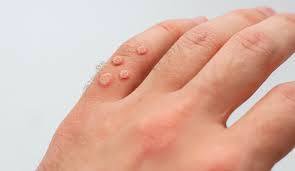
Warts:
Warts are small, usually painless growths on the skin. Most of the time, they are harmless. They are caused by a virus called human papillomavirus (HPV). There are more than 150 types of HPV viruses. Some types of warts are spread through sex.
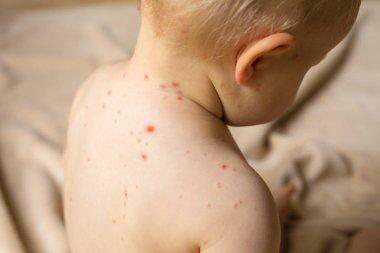
Measles:
Measles is a viral infection of the respiratory system and is a very contagious disease that can spread through contact with an infected saliva or mucus. Common symptoms of measles include high fever, cough, runny nose, sore throat, red or watery eyes and tiny white spots that appear inside the mouth on the inner lining of the cheek.
Hand, foot, and mouth disease: Hand-foot-and-mouth disease is a mild, contagious viral infection common in young children. Symptoms include sores in the mouth and a rash on the hands and feet. Hand-foot-and-mouth disease is most commonly caused by a coxsackievirus. Hand-foot-and-mouth disease often causes a rash of painful, blister-like lesions on the palms of the hands. Rashes appear differently depending on skin tone.
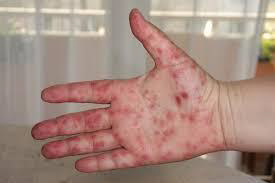
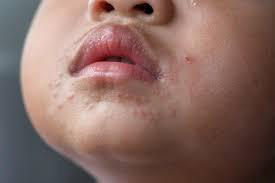
These viruses are often contagious, and most are systemic.
Treatment:
It can include taking an antiviral drug or over-the-counter medication for pain relief. If you have a sore throat, cold, or runny nose, it helps to get plenty of rest, drink water, and take decongestants. Certain viral skin infections can also be treated with lotions, creams, and antihistamines.
3. Fungal skin infections
These types of skin infections are caused by a fungus and are most likely to develop in moist areas of the body where surfaces meet, such as the feet, armpit, or where there are skin folds.
In some cases, an allergy to the fungus causes symptoms in other areas that are not directly affected. For instance, a person with a fungal infection on the foot might develop a rash on their fingers. It doesn’t happen because the person touched their foot.
Different types of fungal infections:

Athlete’s foot:
Athlete’s foot occurs when a certain fungus grows on the skin of your feet. The same fungus may also grow on other parts of the body. However, the feet are most commonly affected, especially between the toes. Athlete’s foot is the most common type of tinea infection.
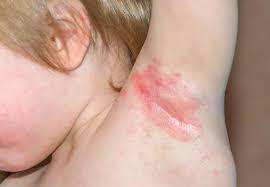
yeast infection:
Yeast is a fungus normally found on your skin. It’s also found in your digestive system. If you’re a woman, you also have yeast in your vaginal area. When too much yeast grows on your skin or other areas, it can cause an infection. This infection is also called candidiasis.
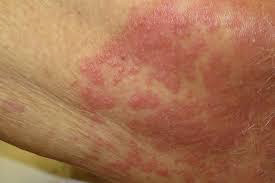
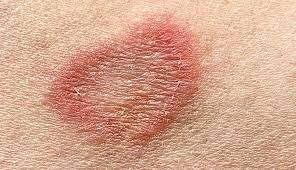
Ringworm:
Ringworm of the body (tinea corporis) is a rash caused by a fungal infection. It’s usually an itchy, circular rash with clearer skin in the middle. Ringworm gets its name because of its appearance. No worm is involved.
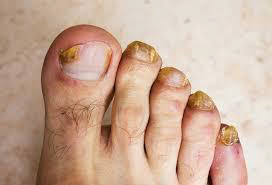
Nail fungus:
An infected nail may separate from the nail bed. Nail fungus is a common infection of the nail. It begins as a white or yellow-brown spot under the tip of your fingernail or toenail. As the fungal infection goes deeper, the nail may discolor, thicken and crumble at the edge.
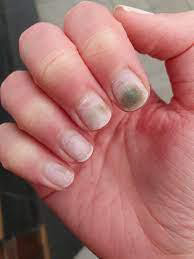
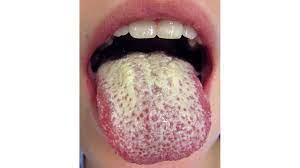
Oral thrush:
Oral thrush is a fungal infection of the mouth. It’s not contagious and is usually successfully treated with antifungal medication. It’s also called oral candidiasis because it’s caused by a group of yeasts called Candida.
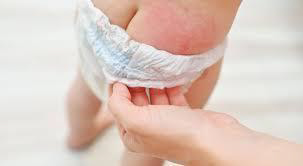
Diaper rash:
Diaper rash is a form of dermatitis that looks like patches of inflamed skin on the buttocks, thighs and genitals. Diaper rash is a form of dermatitis that looks like patches of inflamed skin on the buttocks, thighs and genitals. It can be caused by wet or soiled diaper. Diaper rash usually clears up with simple at-home care, such as air drying, more-frequent diaper changes, and using a barrier cream or ointment.
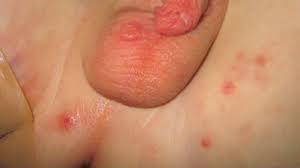
Treatment for skin fungus includes:
- Antifungal creams, many of which are available over-the-counter.
- Stronger prescription medications, which may work faster.
- Oral medicines, if the fungal infection is severe.
4. Parasitic skin infection
These types of skin infections are caused by a parasite. These infections can spread beyond the skin to the bloodstream and organs. A parasitic infection isn’t life-threatening but can be uncomfortable.
Different types of parasitic skin infections include:
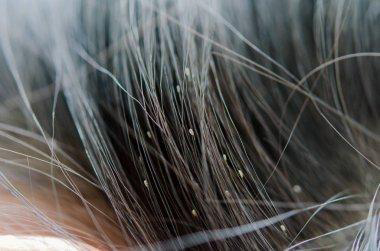
Lice:
Lice are tiny, wingless insects that feed on human blood. Lice spread from person to person through close contact and by sharing belongings.
Head lice found on the scalp. They’re easiest to see at the nape of the neck and over the ears.
Body lice that live in clothing and bedding and move onto the skin to feed. Body lice most often affect people who aren’t able to bathe or wash clothing often, such as homeless people.
Pubic lice, also called crabs, that occur on the skin and hair of the pubic area. Less often, they may be found on coarse body hair, such as chest hair, eyebrows or eyelashes.
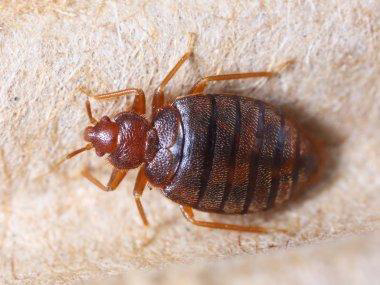
Bedbugs:
Bedbugs are insects that feed on the blood of animals and humans. Adult bedbugs are reddish-brown, wingless, and about the size of an apple seed. Bedbugs aren’t considered dangerous. There’s no evidence they can spread disease to people. But their bites can be itchy and uncomfortable.
If you scratch a bedbug bite enough to break the skin, it could lead to an infection. Some people are allergic to the bites. For them, bites could lead to hives, blisters, or intense itching.
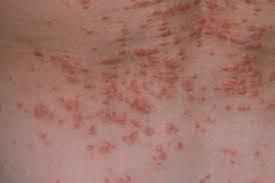
Scabies:
Scabies is an infestation of the skin by the human itch mite. The microscopic scabies mite burrows into the upper layer of the skin where it lives and lays its eggs. The most common symptoms of scabies are intense itching and a pimple-like skin rash.
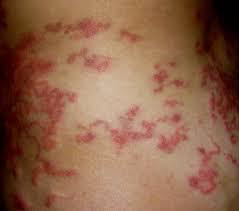
Cutaneous larva migrans:
Cutaneous larva migrans (CLM), also having been termed for the clinical sign of creeping eruption, is an infectious syndrome caused by multiple types of hookworms. This is most commonly transmitted by animal feces depositing eggs in the soil, with larvae entering humans through direct contact with skin.
Treatment:
Parasitic infections are treated with anti-parasitic medication which is administered either topically as a cream, wash, or ointment, or orally. In some cases, an oral antihistamine may also be administered in order to control itching.
- Optimal health is required to prevent and treat an infection.
- Minimize the risk of lacerations, abrasions, thermal and chemical burns, animal bites and insect bites.
- Avoid injury where possible
- Protect from injury and bites using clothing and instruments
- Maintain a clean environment; wash utensils and work surfaces
- Wash hands thoroughly after food preparation and gardening
- Mitigate injury, eg clean wounds thoroughly, apply dressings and bandage to reduce swelling
- Use of insect repellents
- Actively treat acute and chronic inflammatory skin disease.
Bear in mind that excessive hygienic measures may be counterproductive if they lead to:
- Removal of a protective microbiota
- A shift to more pathogenic organisms within the microbiota
- A shift to strains of organisms that are more resistant to treatment
- Removal of the outer layer of skin, damaging skin barrier function.
See a doctor if you have:
- pus-filled blisters
- severe or widespread swelling or inflammation
- a skin infection that doesn’t improve or gets progressively worse
- a high fever or other symptoms
- frequent or recurring rashes or infections
Skin infections can spread beyond the skin and into tissues under the skin or the bloodstream, especially in people with a compromised immune system. When this happens it can lead to sepsis, a potentially life-threatening condition.
Treatment of infection depends on the cause, its severity and its sensitivity to the proposed agent.
Bacterial infection is treated with topical, oral and injected antibiotics.
Fungal infection is treated with topical and oral antifungal agents.
A viral infection is treated with antiviral agents such as aciclovir.

